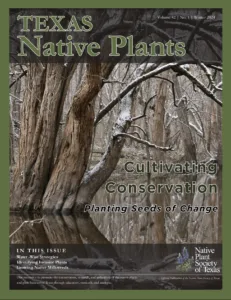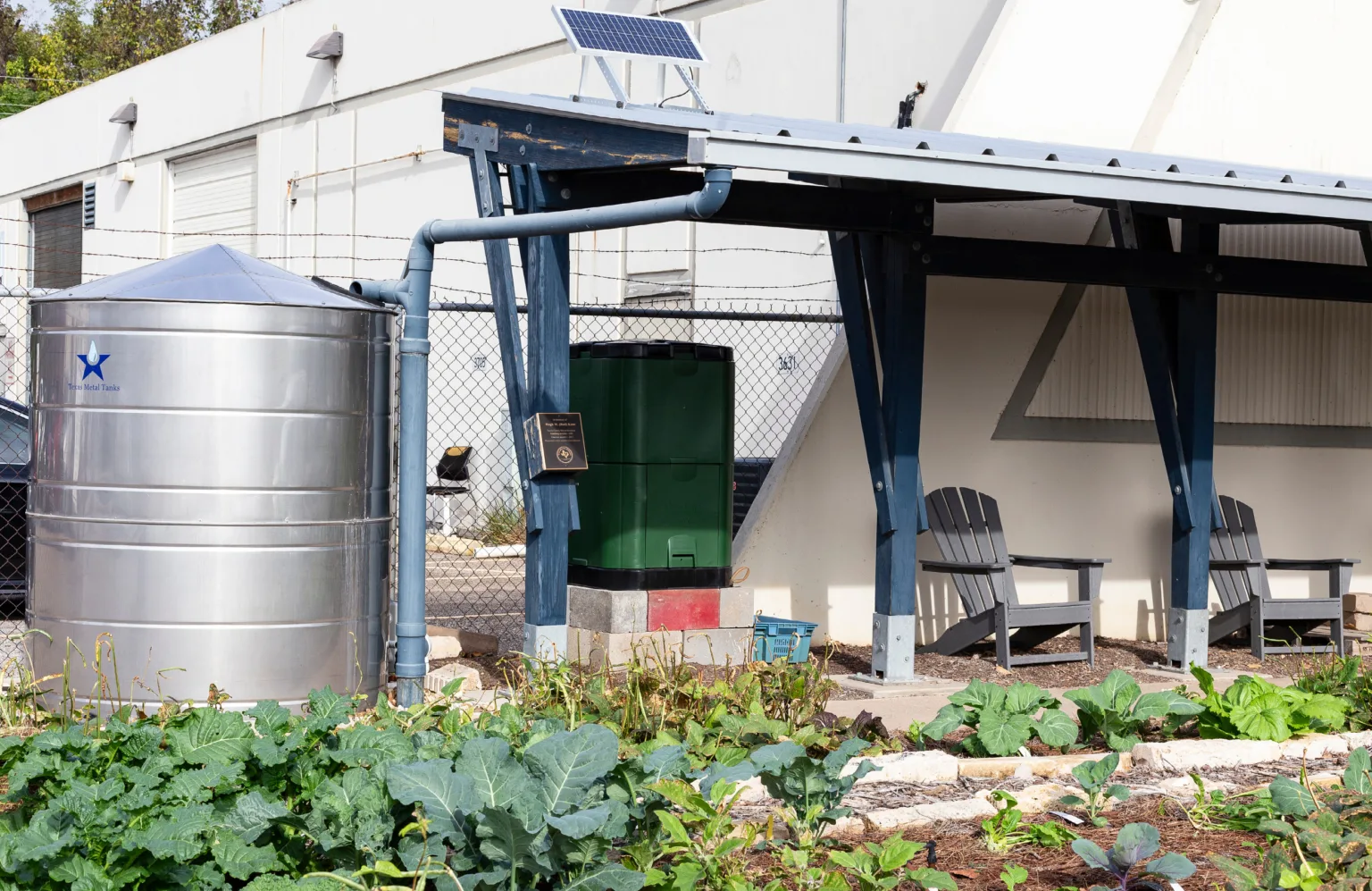
By Michelle Michel, Austin Chapter
If you’ve lived here for any length of time, you already know that Texas has one of the fastest-growing populations in the country, which is putting additional pressure on the state’s already limited water resources. Fortunately, there are SO many things we can do in the garden to conserve water.
Even if you’re already implementing water-wise techniques at home and in the yard, chances are there is still another conservation practice you can add to your arsenal. And if you aren’t doing any of these ideas yet, why not implement a few? In addition to helping preserve our state’s precious water supply, you may also enjoy a reduction in your water bill next summer!
Plant Native
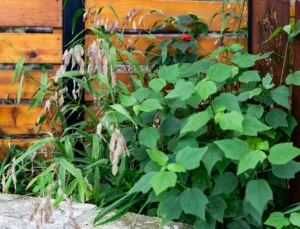
As a reader of Texas Native Plants, chances are you already have native plants growing in your garden. Maybe this summer you noticed that the native species fared far better with less (if any!) additional water than your thirstier non-natives. The native plants growing in nearby grasslands and woodlands and eking their way out of craggy limestone cliffs don’t require additional irrigation. Likewise, once established, the native plants in your yard should require little supplemental water, as long as they are planted in the areas for which they’re best suited; which leads to our next practice . . .
Hydrozoning
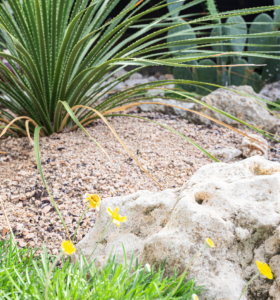
“Hydrozoning” is simply the practice of creating “zones” throughout the landscape with plants of similar water needs. Review your yard noting differences in light, wind, and moisture. Where possible, group plants with similar requirements in the appropriate areas. For example, you might group drought-tolerant, sun-loving Zexmenia (Wedelia acapulcensis var. hispida) and Four-Nerve Daisies (Tetraneuris scaposa) together on the west side of your house. Or, consider planting Turk’s Cap (Malvaviscus arboreus var drummondii) and Giant Spiderwort (Tradescantia gigantea) under the dappled shade of a live oak. Grouping in this way will also allow for adjusting irrigation zones so only plants with high water needs may receive supplemental irrigation.
Mulch
Mulching reduces water evaporation, suppresses weeds, and keeps plant roots cool in the summer and warm in the winter. Mulch can also help prevent soil crusting, which can otherwise lead to decreased water permeation and increased runoff. When you’re choosing the type of mulch to use, consider the plants that are being mulched. Some native plants do much better in poorer soils, and a thick layer of decomposing organic mulch might provide more organic matter than they need, resulting in fungal issues. In cases like this, a mineral mulch such as decomposed granite might be a better choice (be aware, weeds actually thrive in that yummy material, however). If using organic material amongst native plants, consider using a sparser thickness of only two inches (the general recommended amount is 2-4 inches), and pull the mulch 2-3 inches away from the plant’s stem. If you’re hydrozoning as described above, mulch more heavily only in the zones where the plants have greater water requirements.
Soil Amendments
Improving poor soil by amending it with organic matter is another great water conservation practice. Water runoff can be reduced in clay soil when organic matter is added, improving water permeability. Conversely, in sandy soils organic matter can improve water retention. Soil can be amended using fresh or composted materials. Fresh materials such as leaves or grass cuttings are best worked into the soil in the fall, giving time for them to decompose before the growing season. Compost can be added during the fall or just prior to planting. Either way, soil amendments used to improve poor soil structure need to be worked into the soil, not just added to the top as one would with mulch. On the other hand, if you’re composting to maintain already rich soil, simply spread a thin layer before mulching. Just remember, though, some of our native plants do not thrive in rich soil!
Efficient Irrigation
Many of us find that by using the methods described above, little to no additional irrigation is required. When you do need to provide supplemental irrigation, however, it’s important to ensure you’re being as efficient as possible. Where you can, consider using drip irrigation rather than spray or rotor heads. You can expect to use 30-50% less water using drip irrigation. Automatic irrigation systems with newer smart irrigation controllers offer several great features available for efficient irrigation, including automatic seasonal adjustments, cycle and soak, and a rain sensor shut off.
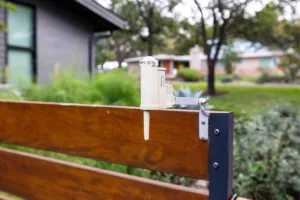
Check the manual to see if these features are available and how to best utilize them. If these options aren’t available, or you irrigate manually, consider monitoring the weather forecast and turning off your irrigation system if rain is forecast in your area. Additionally, many areas of Texas participate in the Water My Yard program, which gives weekly watering advice based on forecast data in your area. Do an online search for watermyyard.org/#texas to find out more.
Finally, the length and timing of your irrigation can impact the efficacy of your water usage. Infrequent deep watering allows the water to reach deep roots, where it can be better absorbed. Frequent shallow watering does little to actually benefit the plant and simply wastes water because it cannot be easily absorbed by the roots. The best time day to water is early morning, just before sunrise. This will avoid both water loss due to evaporation and fungal growth (which can happen when watering in the evening, leaving plants wet all night).
Rainwater Harvesting
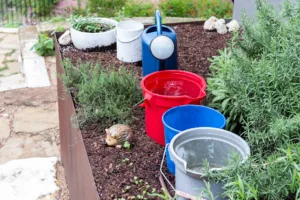
Harvesting rainwater for landscape irrigation is a great way to access free water and can be done to some extent by nearly everyone. It can be as complex as the large system pictured on page 9 or as simple as buckets placed to catch rain water from your roof.
Harvested rainwater is great for plants as it is free of salts and other minerals found in treated water, which can be damaging to their roots. After a summer of record heat and drought throughout Texas, if you weren’t already on the water conservation bandwagon, you likely are now!
Hopefully this overview of practices for your garden have served as inspiration to try something new or encouragement to continue with your excellent water conservation practices.
Photos by Michelle Michel. Michelle can be reached at mominaustin@gmail.com.
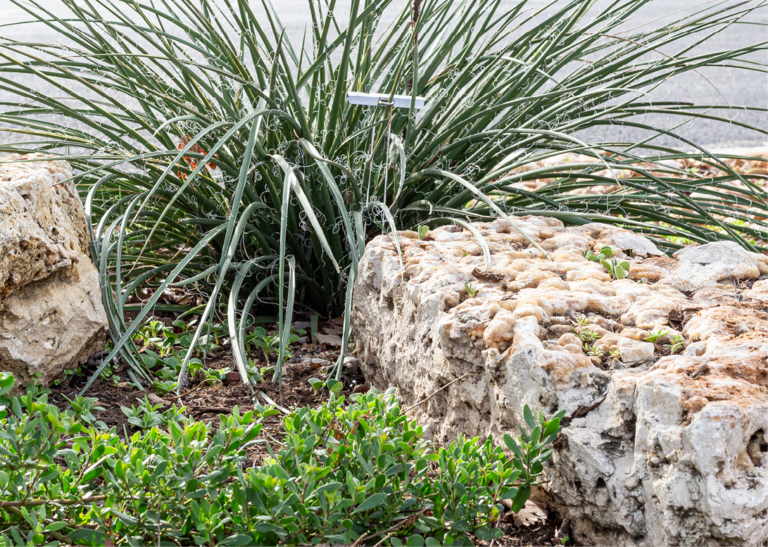
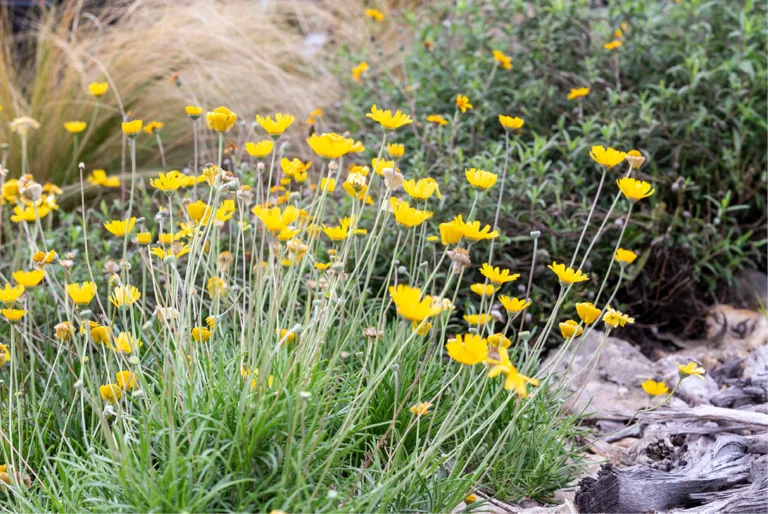
Did you like this article? It’s from our Winter 2024 Texas Native Plants magazine. Read more here

